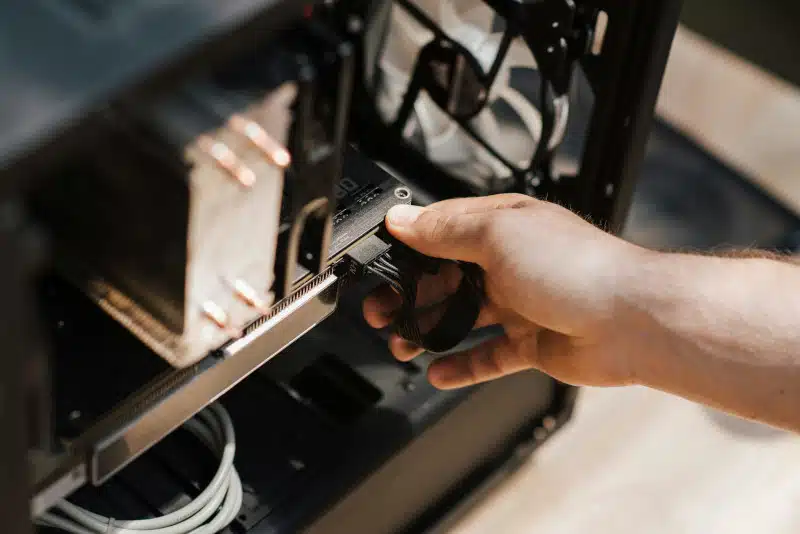Simple Computer Repair Solutions are essential for navigating the challenges of today’s technology-driven world. Knowing where to start can make all the difference when faced with computer issues. This guide will explore straightforward methods to troubleshoot and resolve common computer problems efficiently. From basic troubleshooting techniques to software solutions, empowering yourself with these skills can save time, money, and frustration. Let’s dive into the world of simple computer repair solutions and equip ourselves with the knowledge to overcome obstacles.
Basic Troubleshooting Techniques
To begin addressing a malfunctioning computer, performing basic troubleshooting steps is essential. Firstly, check all connections to confirm that everything is plugged in properly. Restarting the computer can also resolve software-related problems by resetting the system and clearing temporary glitches.
Transitioning to more advanced troubleshooting methods, consider running diagnostic tools to identify hardware or software problems. Windows users can utilize built-in utilities like “chkdsk” to scan for disk errors. You can use the “Windows Memory Diagnostic” tool to check for any memory-related issues in your computer. These tools can help pinpoint the root cause of performance issues, allowing for more targeted solutions.
When troubleshooting computer issues, check external factors. Ensure the power outlet is okay by trying another device or using a surge protector. Inspect cables and ports for physical damage that can cause connectivity problems.
Another fundamental step in troubleshooting is to observe any error messages or symptoms your computer displays. These can provide valuable clues about the underlying problem and help you narrow potential solutions. Take note of the specific error codes or messages and use online resources or support forums to research possible remedies.
Furthermore, if you suspect a recent software installation or update may be causing the issue, consider returning the changes to a previous system restore point. This process can reverse problematic updates and restore your computer to a stable configuration.
Adding these troubleshooting techniques to your skill set will make you more capable of diagnosing and solving a more comprehensive range of computer issues. Remember to approach each issue systematically, starting with the most straightforward solutions before progressing to more complex troubleshooting methods.
Software Solutions for Common Issues
Transitioning to software-related performance issues, consider optimizing your system’s startup programs to reduce boot times and improve overall responsiveness. In Windows, use the “Task Manager” to disable unnecessary startup items.
Viruses and malware are frequent culprits behind computer slowdowns and crashes. Combat these threats by installing reputable antivirus software and performing regular scans to detect and remove malicious programs. Updating your operating system and software applications is essential for patching security vulnerabilities and reducing the risk of cybercriminals’ exploitation.
Furthermore, implementing data backup solutions is essential for safeguarding your important files and documents against accidental loss or corruption. Utilize cloud storage services or external hard drives to create regular data backups, ensuring that you can quickly recover in the event of a hardware failure or software malfunction.
By incorporating these additional software solutions and maintenance practices into your routine, you can significantly enhance the reliability and longevity of your computer system. Taking proactive measures to address common issues and maintain system health will ultimately result in a smoother and more enjoyable computing experience for years to come.
Proactive Maintenance for Long-Term Performance
Regular maintenance is the cornerstone of keeping your computer running smoothly for years to come.
Moreover, proactive maintenance can help prevent future problems and ensure optimal performance. Regularly clean your computer’s internal components, such as fans and vents, to prevent overheating, which can lead to hardware failures and system crashes. Moreover, regularly updating your device drivers and firmware can improve compatibility and performance, ensuring your system operates smoothly.
In conclusion, while encountering computer problems may seem daunting, many issues have simple solutions that users can implement with minimal technical expertise. By following the tips outlined in this blog post, you will have the necessary knowledge and skills to troubleshoot and resolve common computer issues, allowing you to enjoy a smoother and more efficient computing experience.
For expert assistance with implementing these simple computer repair solutions or for more complex technical issues, contact PCMechanic Computer Repair in Davenport, FL, today. I am ready to help you get your computer back in optimal condition, ensuring smooth performance and reliability.
Image Credit: Photo by Anete Lusina


